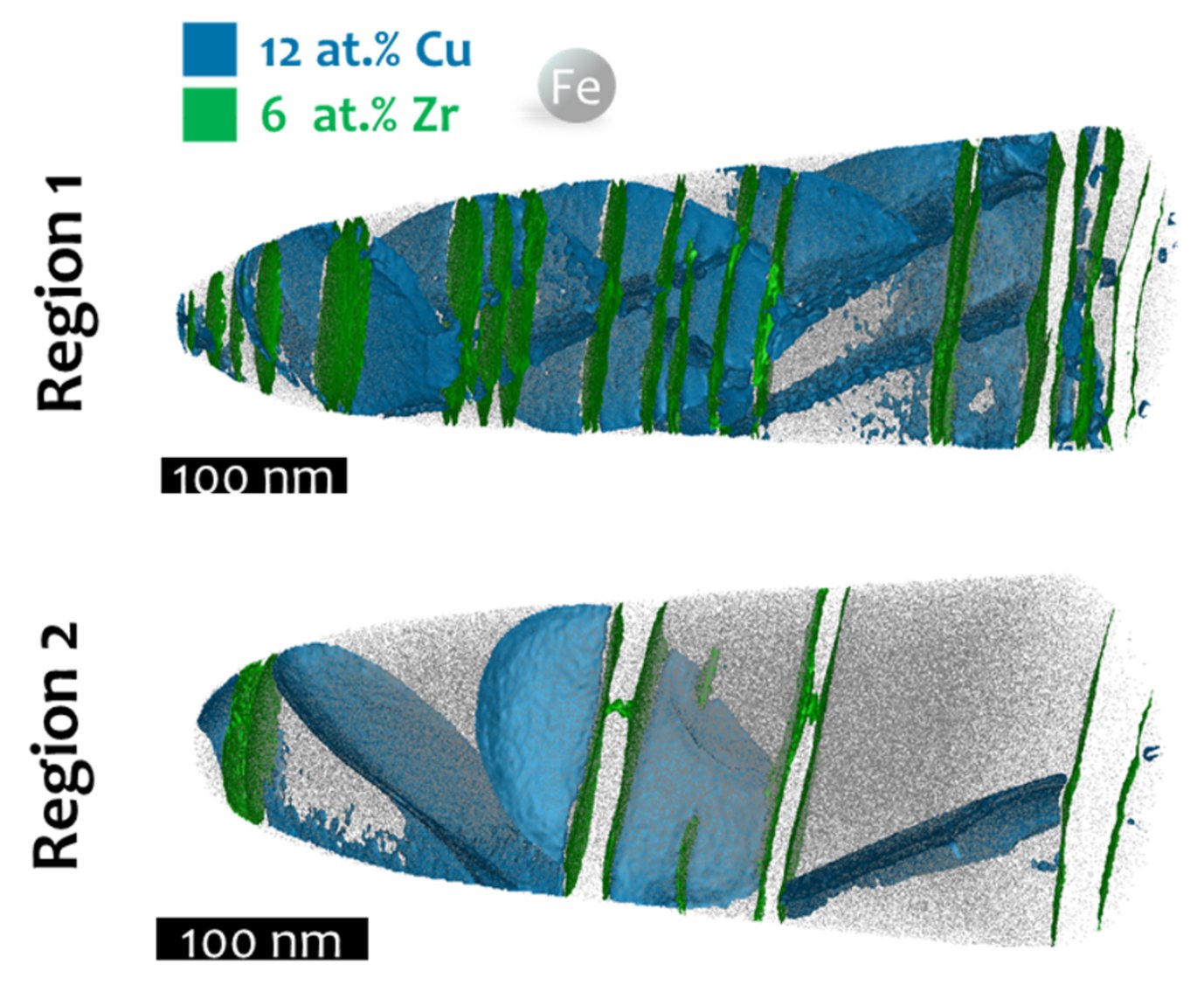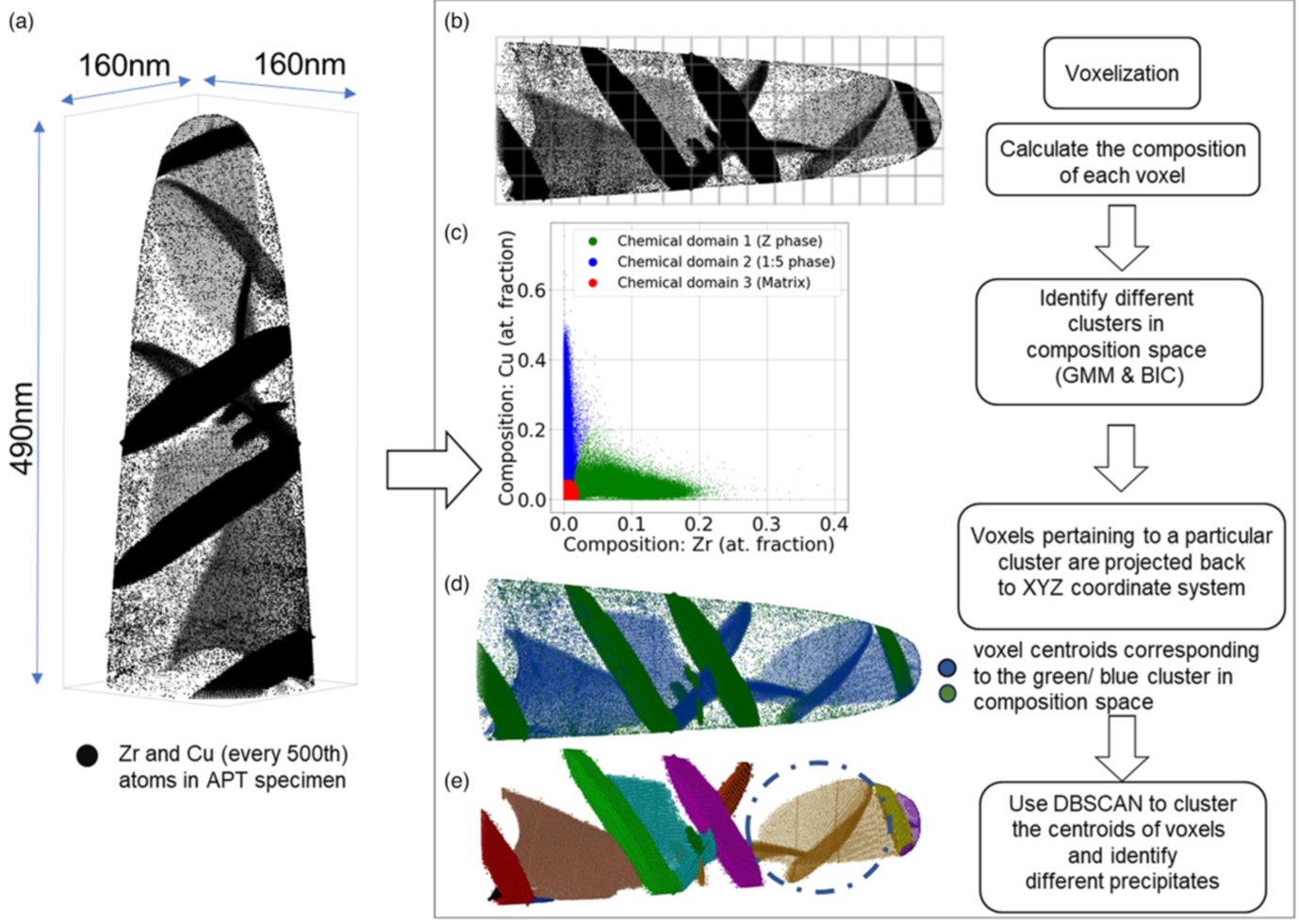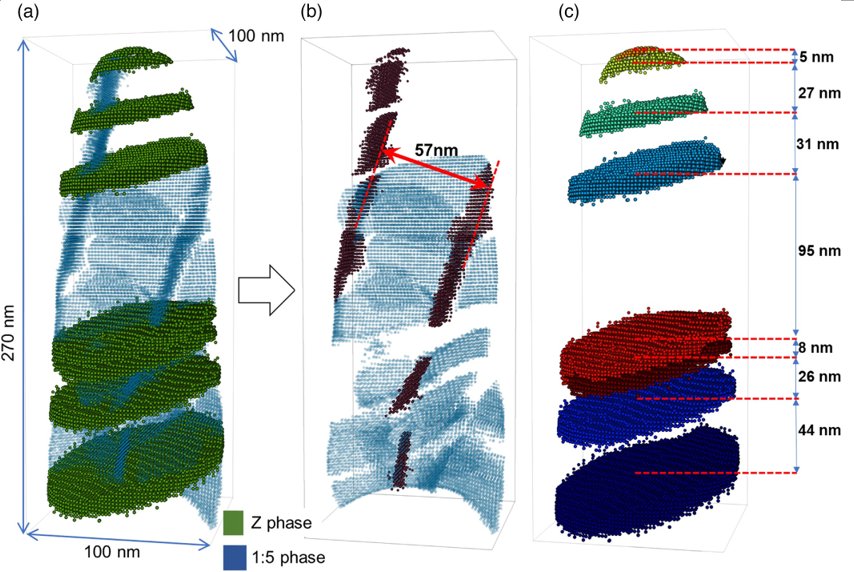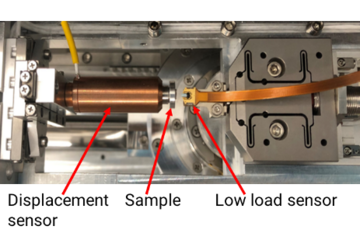Atom probe tomography to advance understanding of magnetic materials
This project is a joint project of the De Magnete group and the Atom Probe Tomography group, and was initiated by MPIE’s participation in the CRC TR 270 HOMMAGE. We also benefit from additional collaborations with the “Machine-learning based data extraction from APT” project and the Defect Chemistry and Spectroscopy group.
Several magnetic systems are currently under active investigation: NdFeB, Sm(Co,Fe), CeCoCu magnets as hard magnetic alloys and CoFeNiTaAl high-entropy alloys as soft magnets.
Permanent magnets draw their properties from a complex interplay, across multiple length scales, of the composition and distribution of their constituting phases, that act as building blocks, each with their associated intrinsic properties. Gaining a fundamental understanding of these interactions is hence key to decipher the origins of their magnetic performance and facilitate the engineering of better-performing magnets, through unlocking the design of the “perfect defects” for ultimate pinning of magnetic domains . We deployed advanced multiscale microscopy and microanalysis on a bulk Sm2(CoFeCuZr)17 pinning-type highperformance magnet with outstanding thermal and chemical stability. Making use of regions with different chemical compositions, we showcase how both a change in the composition and distribution of copper, along with the atomic arrangements enforce the pinning of magnetic domains, as imaged by nanoscale magnetic induction mapping. Micromagnetic simulations bridge the scales to provide an understanding of how these peculiarities of micro- and nanostructure change the hard magnetic behaviour of Sm2(CoFeCuZr)17 magnets. Unveiling the origins of the reduced coercivity allows us to propose an atomic-scale defect and chemistry manipulation strategy to define ways toward future hard magnets.

Atom probe tomography (APT) is ideally suited to characterize and understand the interplay of segregation and microstructure in modern multi-component materials. Yet, the quantitative analysis typically relies on human expertise to define regions of interest. We introduce a computationally efficient, multi-stage machine learning strategy to identify compositionally distinct domains in a semi-automated way, and subsequently quantify their geometric and compositional characteristics. In our algorithmic pipeline, we first coarse-grain the APT data into voxels, collect the composition statistics, and decompose it via clustering in composition space. The composition classification then enables the real-space segmentation via a density-based clustering algorithm, thus revealing the microstructure at voxel resolution. Our approach is demonstrated for a Sm–(Co,Fe)–Zr–Cu alloy. The alloy exhibits two precipitate phases with a plate-like, but intertwined morphology. The primary segmentation is further refined to disentangle these geometrically complex precipitates into individual plate-like parts by an unsupervised approach based on principle component analysis, or a U-Net-based semantic segmentation trained on the former. Following the composition and geometric analysis, detailed composition distribution and segregation effects relative to the predominant plate-like geometry can be readily mapped from the point cloud, without resorting to the voxel compositions.
















